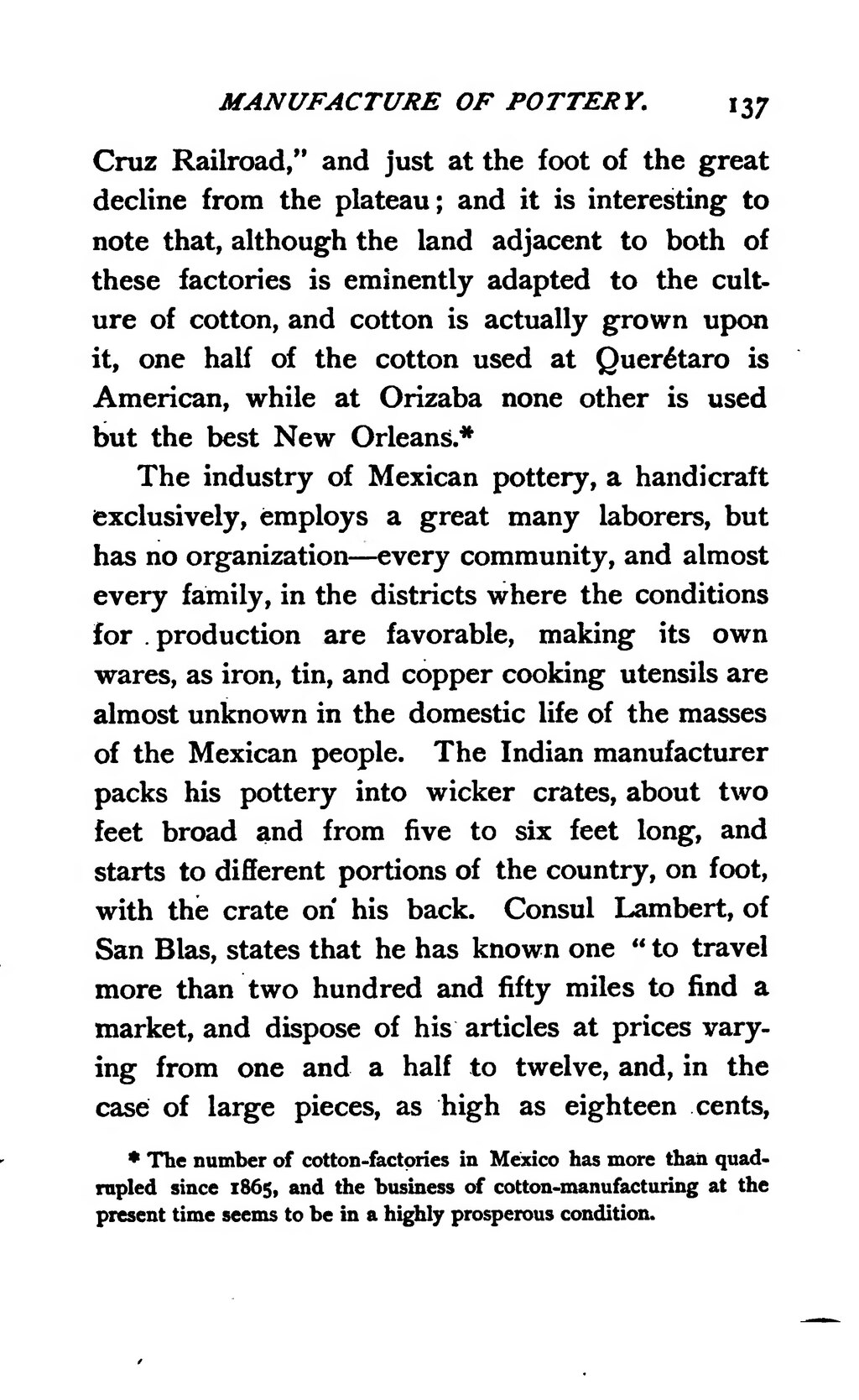Cruz Railroad," and just at the foot of the great decline from the plateau; and it is interesting to note that, although the land adjacent to both of these factories is eminently adapted to the culture of cotton, and cotton is actually grown upon it, one half of the cotton used at Querétaro is American, while at Orizaba none other is used but the best New Orleans.[1]
The industry of Mexican pottery, a handicraft exclusively, employs a great many laborers, but has no organization—every community, and almost every family, in the districts where the conditions for production are favorable, making its own wares, as iron, tin, and copper cooking utensils are almost unknown in the domestic life of the masses of the Mexican people. The Indian manufacturer packs his pottery into wicker crates, about two feet broad and from five to six feet long, and starts to different portions of the country, on foot, with the crate on his back. Consul Lambert, of San Blas, states that he has known one "to travel more than two hundred and fifty miles to find a market, and dispose of his articles at prices varying from one and a half to twelve, and, in the case of large pieces, as high as eighteen cents,
- ↑ The number of cotton-factories in Mexico has more than quadrupled since 1865, and the business of cotton-manufacturing at the present time seems to be in a highly prosperous condition.
